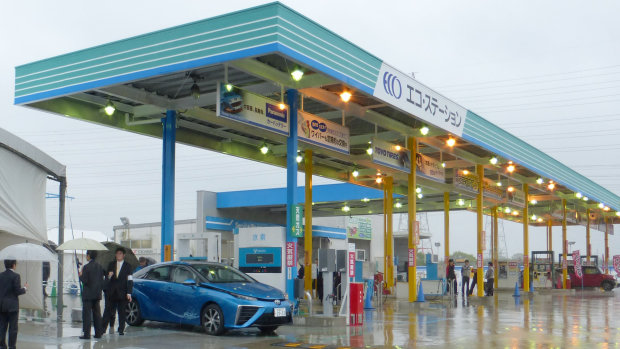Producing industrial scale hydrogen is a cage fight with the laws of physics. it is a possibility, not a policy.
Matthew Warren
Nov 7, 2019
AFR
Share When energy ministers meet later this month, one of the few things they’re likely to agree upon is hydrogen. More specifically, a ringing endorsement to the imminent release of a national hydrogen strategy in Australia.
Japan and the International Energy Agency have released hydrogen strategy papers this year. Global interest in developing a hydrogen economy is the product more of necessity than invention. Industries like steel and cement and heavy transport have limited options in a decarbonised world. They require a clean industrial fuel.
Energy importing industrial economies like Germany and Japan increasingly see hydrogen as their best bet. The plan is to be able to switch to importing zero emissions (green) hydrogen as a replacement to fossil fuels.

Australia is a natural counterpart to this deal: the idea is to replace its declining multi-billion dollar exports of coal and gas to growing multi-billion dollar hydrogen in the future.
Sounds good in theory, but it won’t be easy. Wrangling industrial-scale green hydrogen is like being in a cage fight with the laws of physics.Hydrogen is not a new technology. The global hydrogen market is around 70 million tonnes a year, derived almost entirely from reforming natural gas. It is used in fertilisers and oil refining.
Industrial-scale hydrogen was used to lift German airships in the 1930s and was the main fuel in “town gas” or syngas, which was reticulated to homes and businesses in the middle of the 20th century.
The contemporary reference to hydrogen, like electricity, is an energy vector. With electricity, energy is coded into electricity and decoded instantaneously. Hydrogen is like a physical form of energy. That means it can be stored, moved and then released at some later place and time.
In simplest terms, this coding of energy into hydrogen is done via electrolysis, where electricity is added to water. This separates it into hydrogen and oxygen. A hydrogen fuel cell is simply the reverse of this process, recombining the two gases to produce electricity and water.
NASA pioneered the fuel in space
Hydrogen was first used like this in the 1960s by NASA, which fitted fuel cells to its Gemini and Apollo spacecraft. Fuel cell cars were touted as a possible solution after the OPEC oil crises in the 1970s and re-emerged in 2010 as a possible clean energy replacement for internal combustion engines.
Hydrogen has yet to break through because it has high costs and efficiency losses. Electrolysis is capital expensive and wastes about 40 per cent of the electrical energy used.
Green hydrogen can be produced from zero-emissions sources like renewables. It can also be derived from conventional extraction processes using coal or gas, but only if the carbon emissions are captured and stored (in carbon capture and storage).
That’s a big if. CCS has underwhelmed as a climate solution to date, not because it doesn’t work, but because it requires so much energy to work and doesn’t capture all of the emissions.
Renewable hydrogen remains prohibitively expensive. Its numbers are improving with the use of very cheap renewables, but they are offset by intermittency, which under-utilises the high capital costs of the industrial-scale electrolysers.
Once produced, hydrogen is difficult to store and move. Its small molecules mean it leaks easily. To make pipelines or shipping cost-effective means compressing it sufficiently. Hydrogen doesn’t like being compressed.
It liquifies at -253C. By comparison, natural gas liquifies at around -161C. It’s a vicious cycle. The energy needed to compress and move hydrogen efficiently undermines its competitiveness.
Possible solutions to this include research into converting hydrogen into more manageable compounds, such as ammonia and methylcyclohexane. Both are easier to store and transport, and there’s been research into the use of ammonia in combustion engines. But the catch is that the process of transformation adds yet another energy loss.
Battery option
Perhaps the entry level application of hydrogen in Australia might be simply to use it as a battery: to use periods of surplus renewable generation to recharge fuel cells that can be dispatched during times of peak demand.
That would minimise the energy losses of storage and movement while creating a pathway to reduce costs over time. But it’s still an expensive option.
Continuing to explore ways to make the hydrogen supply chain work is highly desirable in a carbon-constrained world. As Professor Alan Finkel’s imminent report will no doubt identify, carving out an Australian role as a potential supplier will be an important contribution.
Hydrogen is a challenging global research program that has been decades in development, and might take decades more to resolve. It is not an energy policy. Governments cannot promise a hydrogen future as a solution to climate change. They still need to hope for the best and plan for the worst.
Subscribe to our free mailing list and always be the first to receive the latest news and updates.
